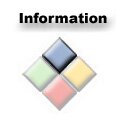|
 Information > Strategic Planning > KPI, Metrics & Dashboard Information > Strategic Planning > KPI, Metrics & Dashboard
Strategic Planning
|
“The old axiom that you can’t manage if you can’t measure is never truer than in the context of alignment. The center of the alignment model is leadership and culture – and underlying culture is measurement. Measurement drives behavior and behavior, in turn, creates culture. New Web-based technologies now exist that enable senior executives to quickly and frequently assess the state of alignment within their organizations. Using easy-to-understand graphic displays, managers can identify areas of best-demonstrated practice and pockets of misalignment.”
Labovitz & Rosansky, "The Power of Alignment" (2004)
|
KPI, Metrics & Dashboard
Performance management tools help an enterprise align with strategy by tracking and analyzing key business metrics and goals via management dashboards, scorecards, and alerting. Goals are set around metrics and assigned to users (or groups of users). Groups can then analyze information, collaborate with other stakeholders, take recommended actions, and feel confident about the decisions they make.
The section of this website on Performance Support provides a model for Analyzing Performance Problems, and a discussion of Meaningful Metrics.
| KPI |
Key Performance Indicator; an observable and measurable behavior that allows tracking of an important category
|
| Metric |
A measure of performance; a "target" measure is used in stating an objective
|
| Scorecard |
A systematic set of measures; the "balanced scorecard" includes measures from financial, customer, internal and learning & growth perspectives
|
| Alerting |
An automated method of flagging a user when a target measure or status has been reached |
| Dashboard |
A visual representation of enterprise performance allowing tracking of Key Indicators; a user interface that allows a summary of metrics to be presented to decision-makers
|
The goal of these tools is to turn information into a strategic asset:
- Align actions with strategy for continuous performance improvements
- Monitor what matters most so you can focus on meeting strategic objectives
- Act with confidence knowing the right information is being delivered at the right time to the right group to make the right decisions
|
Key Performance Indicators (KPI)
|
Description: Targets
|
| Delivery Performance |
% of orders fulfilled on or before customer request date or original scheduled date |
| Fill Rate |
% of shipments from stock orders shipped within 24 hours of order receipt |
| Lead Time |
Average actual lead times consistently achieved from customer authorization to receipt of order |
| Perfect Order Fulfillment |
% of orders meeting delivery performance, with complete and accurate documentation, and not damaged |
| Supply Chain Response Time |
The time it takes the integrated supply chain to respond to abnormal (significant) change in demand |
| Production Flexibility |
Upside: number of days required to achieve an unplanned sustainable 20% increase in production
Downside: Percentage order reduction sustainable at 30 days prior to delivery with no inventory or cost penalties
|
| Total Logistics Cost |
Sum of supply chain related cost for: MIS, Finance, Planning, Inventory, Material Acquisition, Order Mgt |
| Value added Productivity |
Calculated as total product revenue, less total material purchases divided by total employment |
| Warranty Costs |
Materials, labor, and problem diagnosis for product defects |
| Inventory Days of Supply |
Total gross value of inventory at standard cost before reserves for excess and obsolescence |
| Cash to Cash Cycle Time |
Inventory days of supply + days sales outstanding minus days of payables |
| Asset Turns |
Total turns of capital employed |
Dashboards are highly visual representations of enterprise performance that integrate a variety of data elements into a single graphic display.
Whether cross-functional or domain -specific, dashboards are designed to deliver maximum visual impact in a format optimized for quick absorption. Dashboards combine tables, graphs, gauges, dials, and other graphical indicators, conditional formatting, free-form labels, borders and background colors to achieve this impact.
Here are examples of a Dashboard provided by Xcelsius corporation. The first Dashboard is used to monitor net income: revenues by state and restaurant size. In addition to presenting summary data, interactive controls are provided to generate "what if" scenarios by manipulating the percentage role of "Sales Growth", "Administrative Costs", and "Franchise Fee".

Dashboards are an excellent way for executives and all decision-makers to quickly become aware of the status of the business, discover relative progress, as compared, for instance to other territories, other divisions, or other time periods, and identify the valuable performance trends.
In this second Xcelsius example, a Dashboard is used to present Market Share data of competing vendors by State.

Dashboards are no longer exclusively for executive management. All users need access to information so they can make sound decisions. Too much information causes clutter, while not enough information is irrelevant. Ideally, Dashboards can be rapidly deployed and personalized for different users and groups of users.

|
|
 |
KPI,
Metrics &
Dashboard
|
 |
|
|



